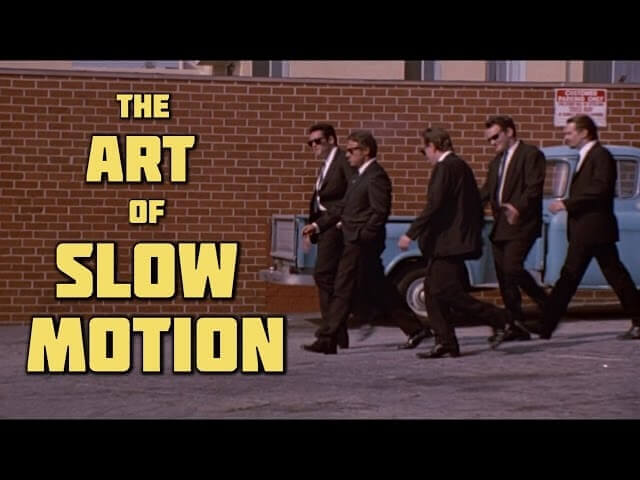The art of slow motion and the discarded image

Traditionally, films are both shot and projected at a rate of 24 frames per second. This produces a smooth flowing moving image that approximates the way that the human visual system perceives the world. However, if one were to “overcrank” the camera and shoot more frames per second than will ultimately be projected, the resulting effect is a uniquely cinematic experience. Time seemingly slows down, and the movements of the world can be observed in a manner not possible 200 years ago. This is slow motion, and it’s been a vital tool of filmmakers since very shortly after the invention of the movie camera in the mid-19th century.
In this short, explanatory video from The Discarded Image YouTube channel, Julian Palmer (who previously broke down the shower scene from Alfred Hitchcock’s Psycho for us) walks us through the many ways in which this cinematic device is used to manipulate the audience’s emotions and enrich their viewing experience.
Below, we have two iconic slow motion scenes that Palmer briefly touches on in his video. It might be worth taking a closer look at both of them to get a better understanding of the different ways in which slo-mo can be used. Take a look at this scene from 1987’s The Untouchables:
Then watch this one from 1999’s The Matrix:
What’s interesting is that they’re both pretty similar in function (the heroes shoot down a collection of random thugs in the lobby of a public space) but completely different in kind. In The Untouchables, Brian De Palma slows down time to ramp up the suspense of a key moment—the narrative turns on the way the scene plays out, and the film’s conclusion is a direct outgrowth of this moment. Stretching out the action adds weight to each discrete movement and decision made by Eliot Ness and George Stone.
In The Matrix, on the other hand, the narrative pretty much takes a cigarette break out back while Neo and Trinity have fun blowing a marble foyer all to hell in spectacular style. You could cut the scene out of the movie, and it wouldn’t leave the audience an iota more confused, though it might render them somewhat less giddy. It’s effectively a dance scene or a musical number. That’s not a knock; it’s a compliment. Had the Wachowskis adhered slavishly to the plot and resisted opportunities to make things look mindlessly awesome, the film likely would not be remembered so fondly.
While both of these scenes are remarkably similar yet completely different, each one represents a shading to the storytelling craft that was inconceivable for the first several hundred thousand years of humanity’s existence.